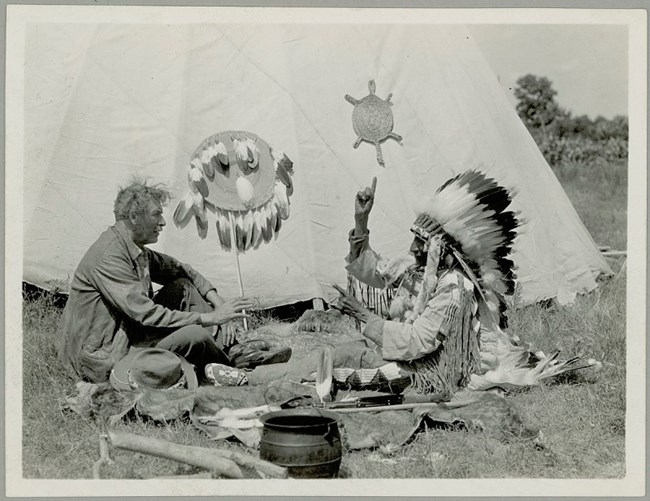Last updated: May 27, 2021
Article
American Indian Sign Language

Photo courtesy of the National Anthropological Archives, Smithsonian Institution.
On August 14, 1805 Lewis and a small advance party encountered the Shoshones near Lemhi Pass. Lewis recorded, “The means I had of communicating with these people was by way of Drewyer [Drouillard] who understood perfectly the common language of jesticulation or signs which seems to be universally understood by all the Nations we have yet seen[.] it is true that this language is imperfect and liable to error but is much less so than would be expected[.] the strong parts of the ideas are seldom mistaken.” Lewis almost certainly overestimated the universality of the sign language his men were using, as scholars have identified at least five indigenous sign languages in what is now the United States. The most well-documented of these, Plains Indian Sign Language (PISL), itself has several different dialects.
George Drouillard, who was hired at the rate of $25 per month as an “Indian Interpreter,” was the Expedition’s most fluent signer and likely used one or multiple PISL dialects. At the time that Drouillard interpreted for the Expedition, it is estimated that there were tens of thousands of indigenous signers in what is now the United States. While it was likely used by deaf indigenous people, the majority of users were probably hearing and using sign as a common language to communicate across the barriers of verbal tongue and dialect.
